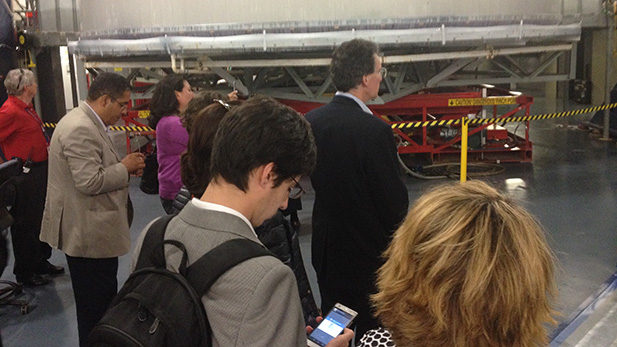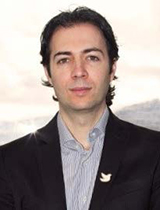 International innovation and business development leaders tour the UA's Richard F. Caris Mirror Lab during a visit to Arizona and California to foster collaboration and partnerships.
International innovation and business development leaders tour the UA's Richard F. Caris Mirror Lab during a visit to Arizona and California to foster collaboration and partnerships.Technology and innovation leaders from around the world are visiting Arizona with an eye toward collaboration and business, and public-private partnerships.
The University of Arizona was one of about a dozen sites the 51 people from 24 countries visited this week. The group got a close look at the massive mirrors being fabricated at the Richard F. Caris Mirror Laboratory for the Giant Magellan Telescope.
Organized by the Arizona Commerce Authority, the fifth Americas Competitiveness Exchange included technology and economic development representatives from Europe and Asia, as well as North, Central and South American countries.

Thomas Guevara, a deputy assistant secretary with the U.S. Department of Commerce’s economic development administration said information exchanges provides opportunities for research and trade collaborations.
“It’s very important in a globalized economy that we bring other participants together from many countries to see what is going on in the world of innovation and in public and private partnerships projects so that we can build stronger relationships," Guevara said. "Ultimately those relationships will turn into greater trade and investment for U.S. firms and U.S. communities.”
The group also visited Biosphere 2 and Raytheon Missile Systems in Tucson; the UA’s College of Medicine-Phoenix, Arizona State University’s Biodesign Institute, and the Phoenix-Mesa Gateway Airport in the Phoenix area, and the UA’s Yuma Agricultural Center before traveling to California for additional tours. Their first stop was Grand Canyon National Park.
The Arizona Science Desk is a collaboration of public broadcasting entities in the state, including Arizona Public Media.

By submitting your comments, you hereby give AZPM the right to post your comments and potentially use them in any other form of media operated by this institution.